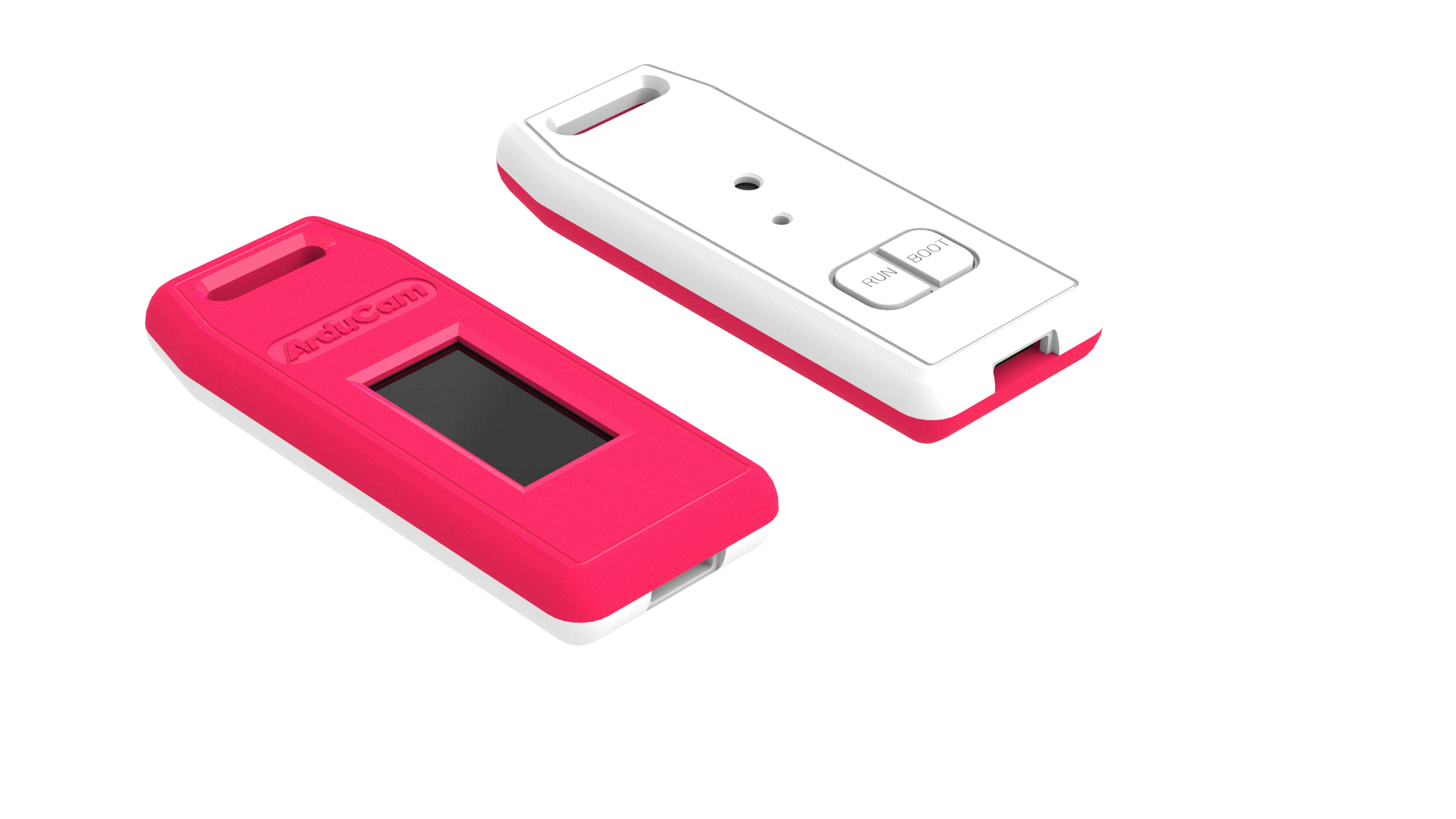QVGA Camera Module
Arducam built the front camera module with the HiMax HM01B0 CMOS sensor, it’s a great balance between performance and efficiency. It’s able to capture QVGA videos/photos at a maximum of 60 frames per second. This’d make the board a pretty reasonable fit for all the machine vision models/examples.
0.96 inch LCD
The small TFT display at the back of Pico4ML is a 160x80 LCD, it’s connected to the board through the SPI interface, you can do a live preview of the camera, or display the results of any of your ML models in real time.
Onboard Microphone
The audio chip on the Pico4ML is capable of outputting PDM (Pulse-density modulation) signals, this integration allows the RP2040 to do live audio recording, and it’s great for all the speech/voice recognition models.
Reset Button
They’ve also added a reset button to the board, unlike the official RPi Pico, you don’t have to unplug anymore.
RPi Style Enclosure

The Arducam team also designed a customized enclosure, it has the look and feel of a foundation RPi case, and you can fit the Pico4ml board perfectly in and take it anywhere.
*This is not included in the package.
**The Arducam team has made the source files ready for your 3D printers. You can find the link down below.
Three Pre-Trained Models from The TinyML Book
Person Detection Demo
This model is trained to recognize when a person is present in the camera input, it is able to detect the absence or presence of a person and produce an output accordingly.
Magic Wand (Gesture Recognition) Demo
This is a model that is built to understand physical gestures, as its name implies, you can use the Pico4ML as a magic wand to cast pre-trained spells, in plain words, the board knows when you wave it quickly in a W (wing), O (ring) or L (slope) shape.
It’s not limited to these 3 spells, you can train it with any gestures.
Wake-Word Detection Demo
This is a speech recognition model, it takes the audio input with the onboard microphone and outputs whether the board’s in a complete silent room, someone saying yes/no, or other unknowing words.
Arducam Pico4ML Specifications
- Microcontroller: Raspberry Pi RP2040
- IMU: ICM-20948
- Camera Module: HiMax HM01B0, Up to QVGA (320 x 240 @60fps).
- Screen: 0.96 inch LCD SPI Display (160 x 80, ST7735)
- Operating Voltage: 3.3V
- Input Voltage: VBUS: 5V +/- 10%. VSYS Max :5.5V
- Length: 51 mm
- Width: 21 mm
Pinout

RP2040 Specifications
- Dual-core Arm Cortex-M0+ processor, flexible clock running up to 133 MHz.
- 264KB on-chip SRAM.
- 2MB on-board QSPI Flash.
- 26 multifunction GPIO pins, including 3 analogue inputs.
- 2 × UART, 2 × SPI controllers, 2 × I2C controllers, 16 × PWM channels.
- 1 × USB 1.1 controller and PHY, with host and device support.
- 8 × Programmable I/O (PIO) state machines for custom peripheral support.
- Supported input power 1.8–5.5V DC.
- Operating temperature -20°C to +85°C.
- Castellated module allows soldering direct to carrier boards.
- Drag-and-drop programming using mass storage over USB.
- Low-power sleep and dormant modes.
- Accurate on-chip clock.
- Temperature sensor.
- Accelerated integer and floating-point libraries on-chip.
 UCTRONICS
UCTRONICS
The stp file can't be loaded into fusion 360. 2 attempts failed. Fusion360 says:
Missing References
33button_prt.stp
33down_prt.stp
33up_prt.stp